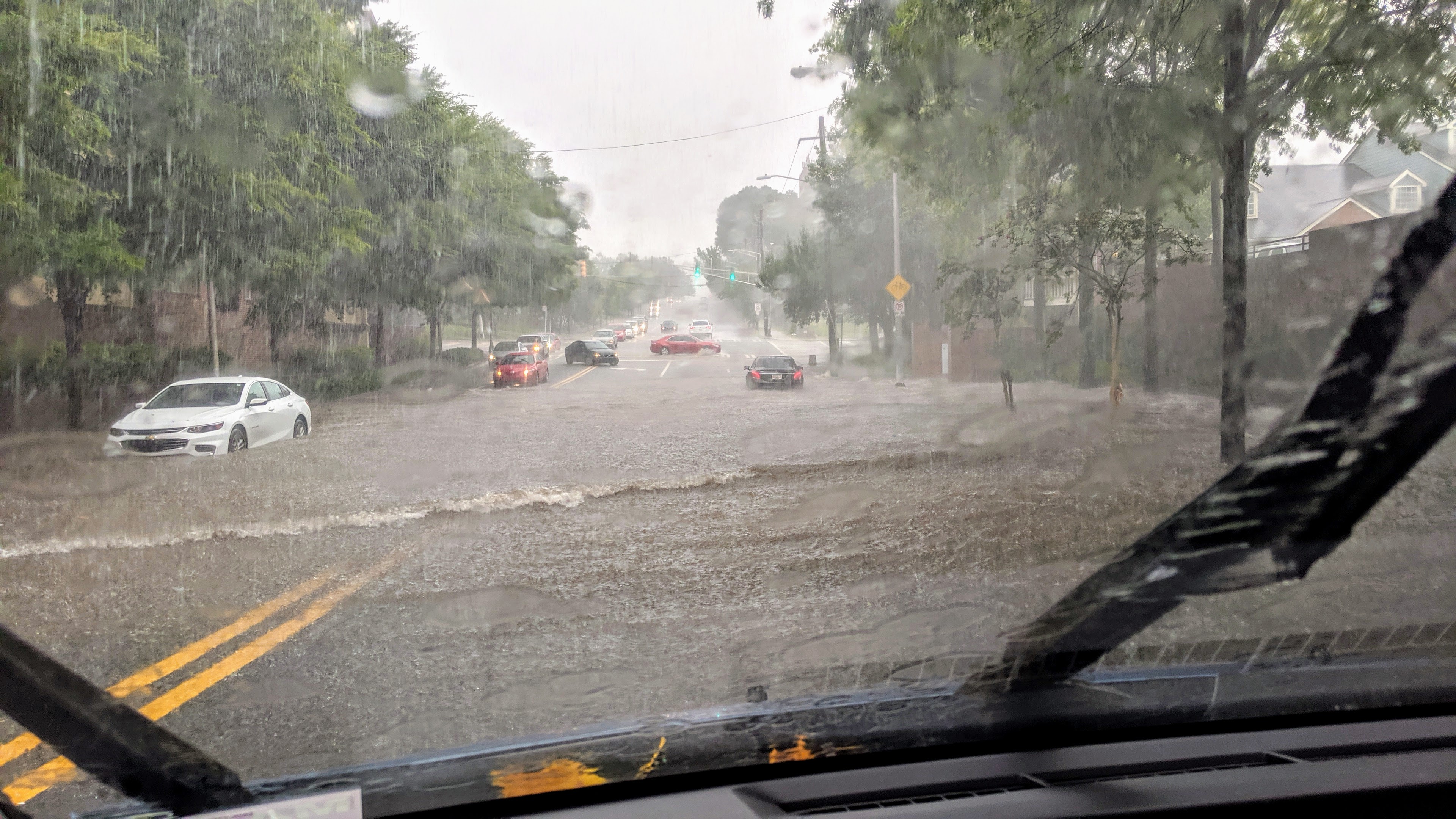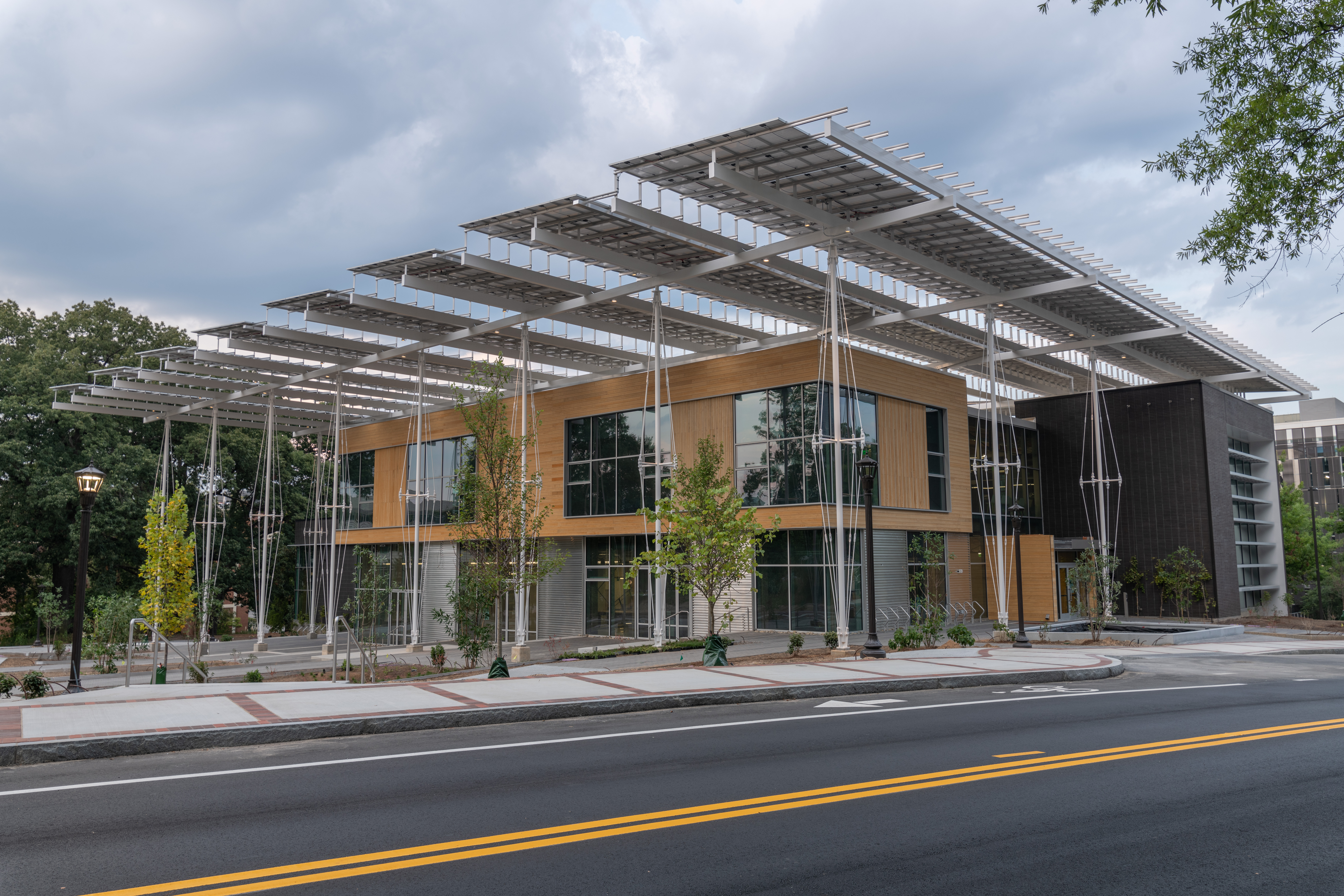Petals: Equity and Water
Imperative: explicit – Net Positive Water; however rainfall management is an Equity consideration
Reducing Burden To Downstream Communities
Rainfall is often overlooked as an equity issue. In most urban environments, it’s treated as stormwater—something to quickly divert using infrastructure, rather than manage as a resource. Most buildings send rainwater into sewers or streets, and impervious surfaces like asphalt and concrete prevent water from being absorbed into the soil. This “not in my backyard” approach shifts the problem downstream, where flooding and other consequences often affect underserved communities.
Even moderate rain events can cause localized flooding and strain infrastructure. For an example of this impact near Georgia Tech, visit the West Atlanta Watershed Alliance.
Recognizing that The Kendeda Building sits upstream in the Peachtree Creek watershed, the design team approached stormwater with an equity lens. Their decisions were guided by Living Building Challenge standards, which led to a landscape that mimics the native Piedmont Forest—an ecosystem capable of retaining 90% of rainfall from typical storms. The site now performs more like a forest than a building.
Rainwater is captured from the solar canopy, green roof, and roof deck, filtered, and stored in a 50,000-gallon cistern in the basement. This system captures roughly 41% of annual rooftop runoff. Once the cistern is full, excess water flows into bioswales and pervious surfaces around the site, where it gradually recharges the groundwater. Moreover, the building is surrounded with pervious surfaces and bioswales that allow for water to slowly seep into the ground.
If more buildings followed this model, stormwater could shift from being a burden on infrastructure to an asset.

